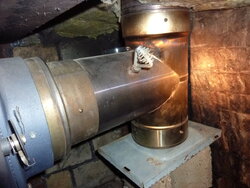Last weekend I brushed my liners form the top and this weekend I cleaned everything up from the bottom. I was curios if my soot production last year was going to be higher after using in dampers in the tee snouts. It was also sort of a mostly mild winter with many cold starts and really not much 24x7 burning so Ii figured that may add to it too...
Primary stove had 2 quarts of dark brown powder with a good number of stink bugs mixed in. The basement stove that I really only burned when it was too cold for the primary to keep up had almost nothing. I guess because that one is the older of the 2 (leaky) and was run in a higher draft environment, that is why it was so clean.
All in all, i am very happy. 4 cords burned and 2 quarts of dust I think is awesome.
Conclusion: dampers helped keep draft under control but did not lead to dangerous creosote accumulation.
P.S. Break-in fire tonight
Primary stove had 2 quarts of dark brown powder with a good number of stink bugs mixed in. The basement stove that I really only burned when it was too cold for the primary to keep up had almost nothing. I guess because that one is the older of the 2 (leaky) and was run in a higher draft environment, that is why it was so clean.
All in all, i am very happy. 4 cords burned and 2 quarts of dust I think is awesome.
Conclusion: dampers helped keep draft under control but did not lead to dangerous creosote accumulation.
P.S. Break-in fire tonight




